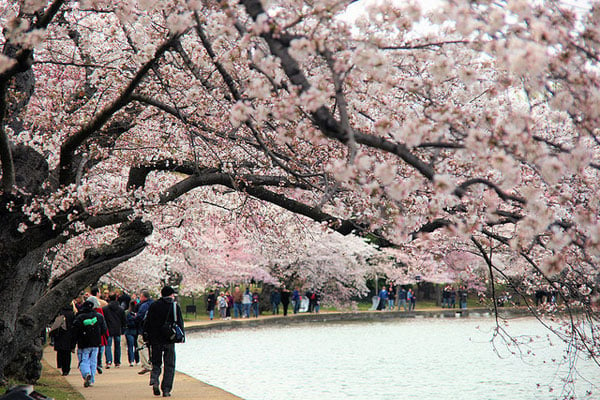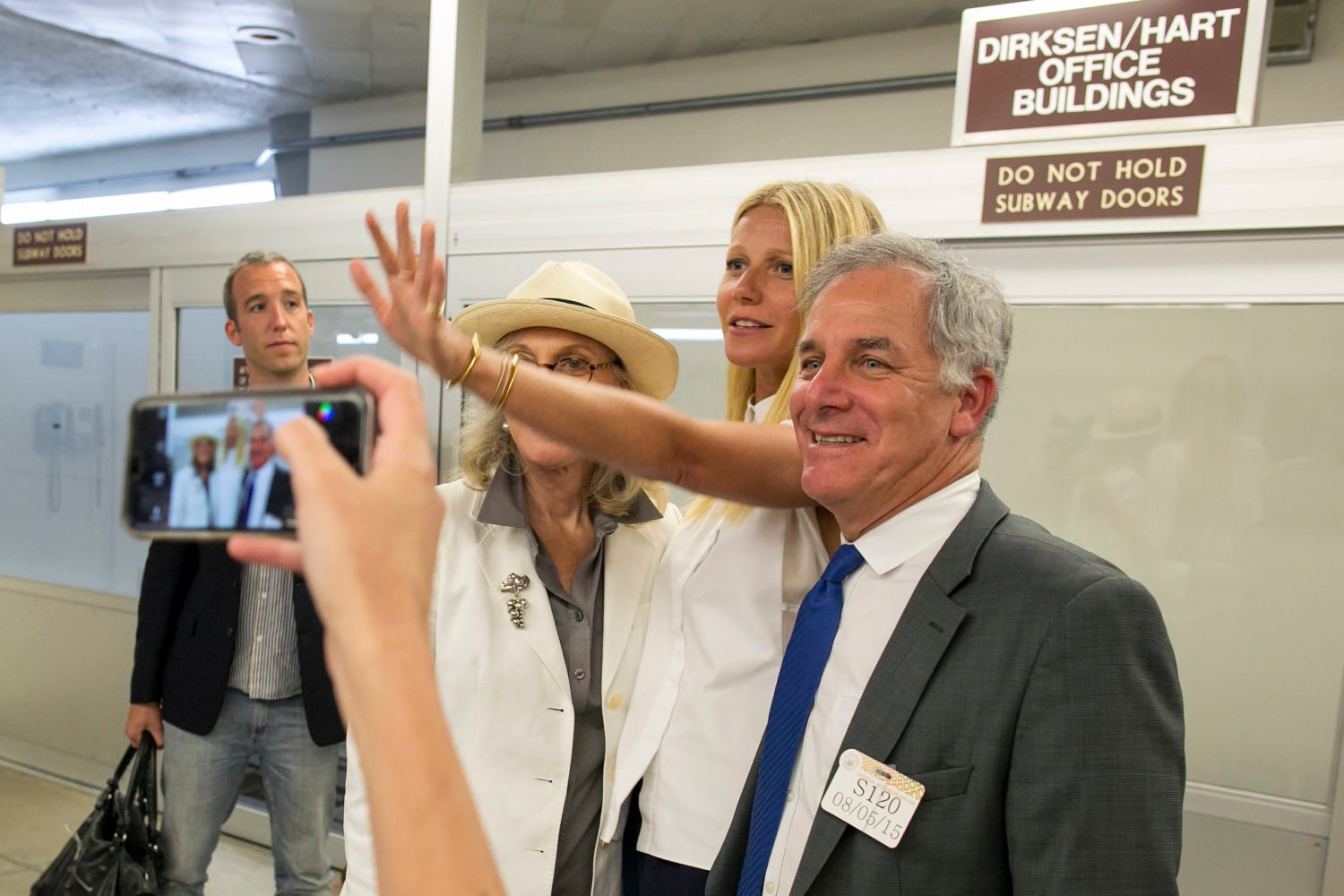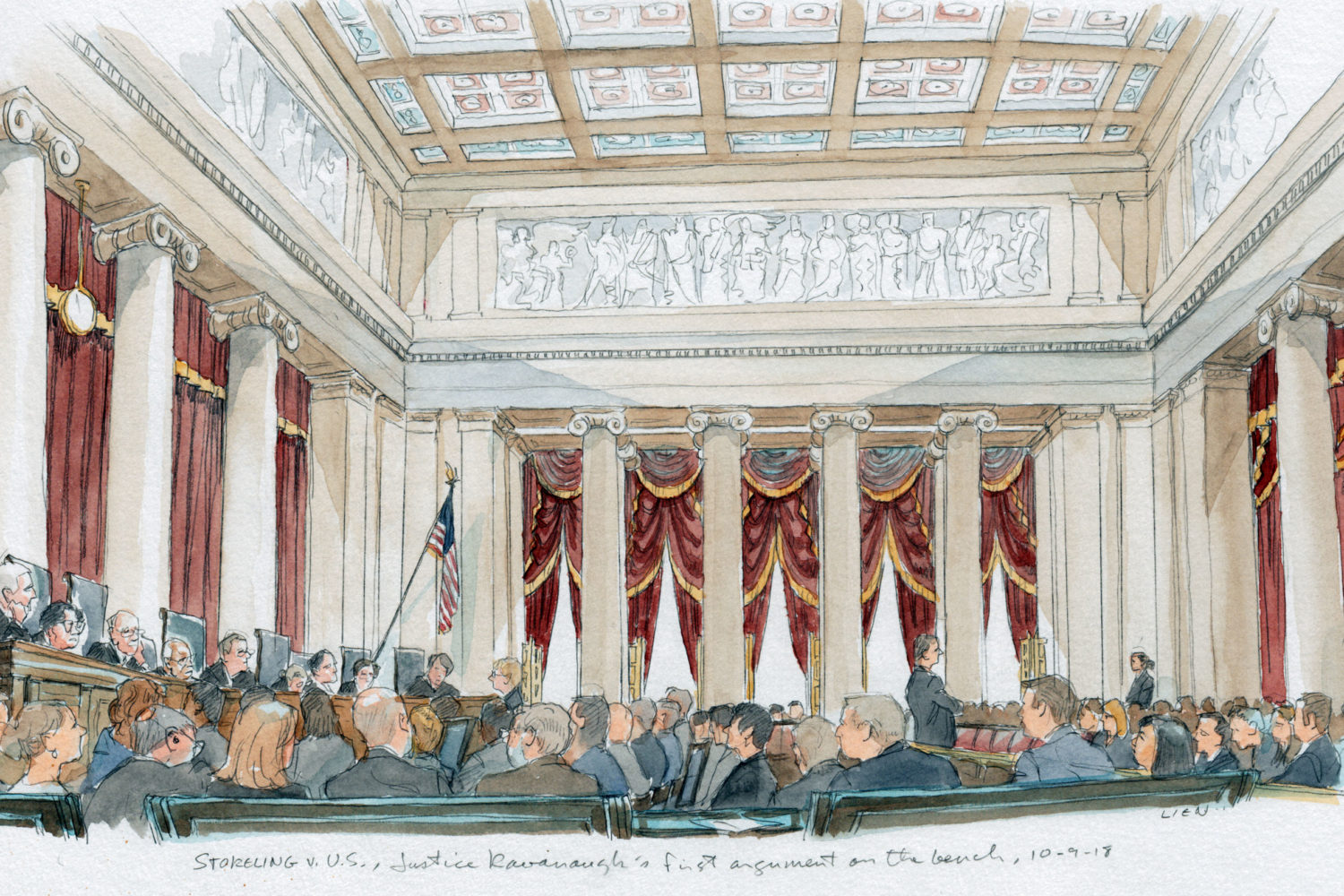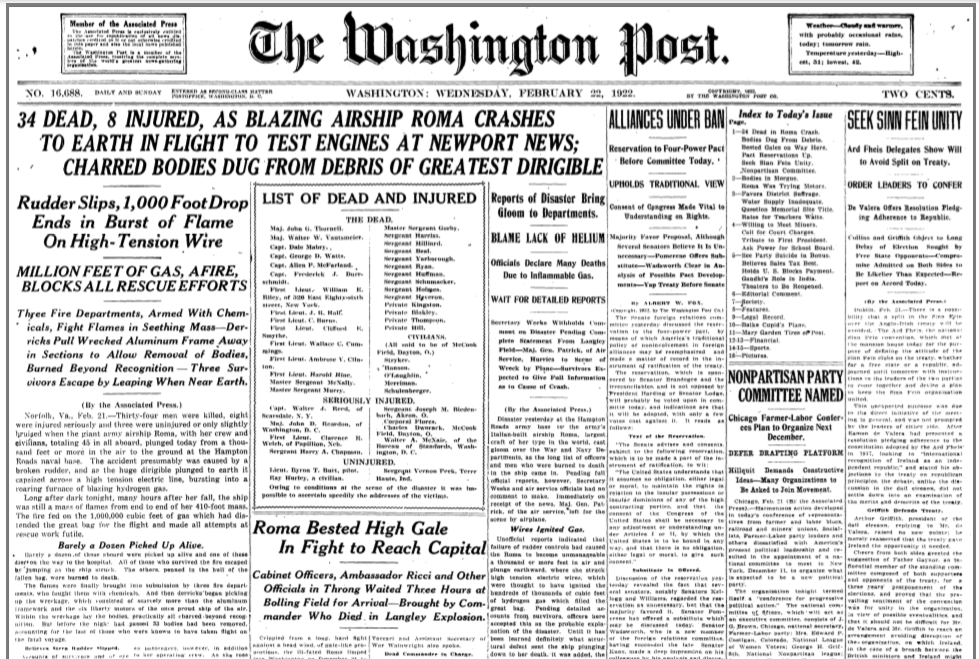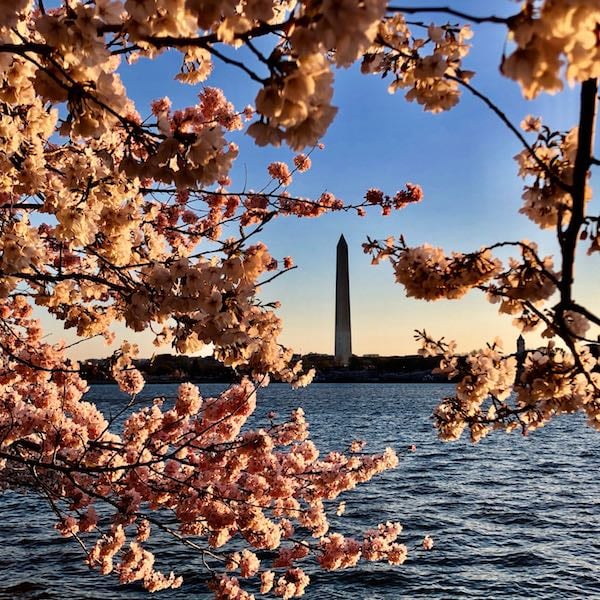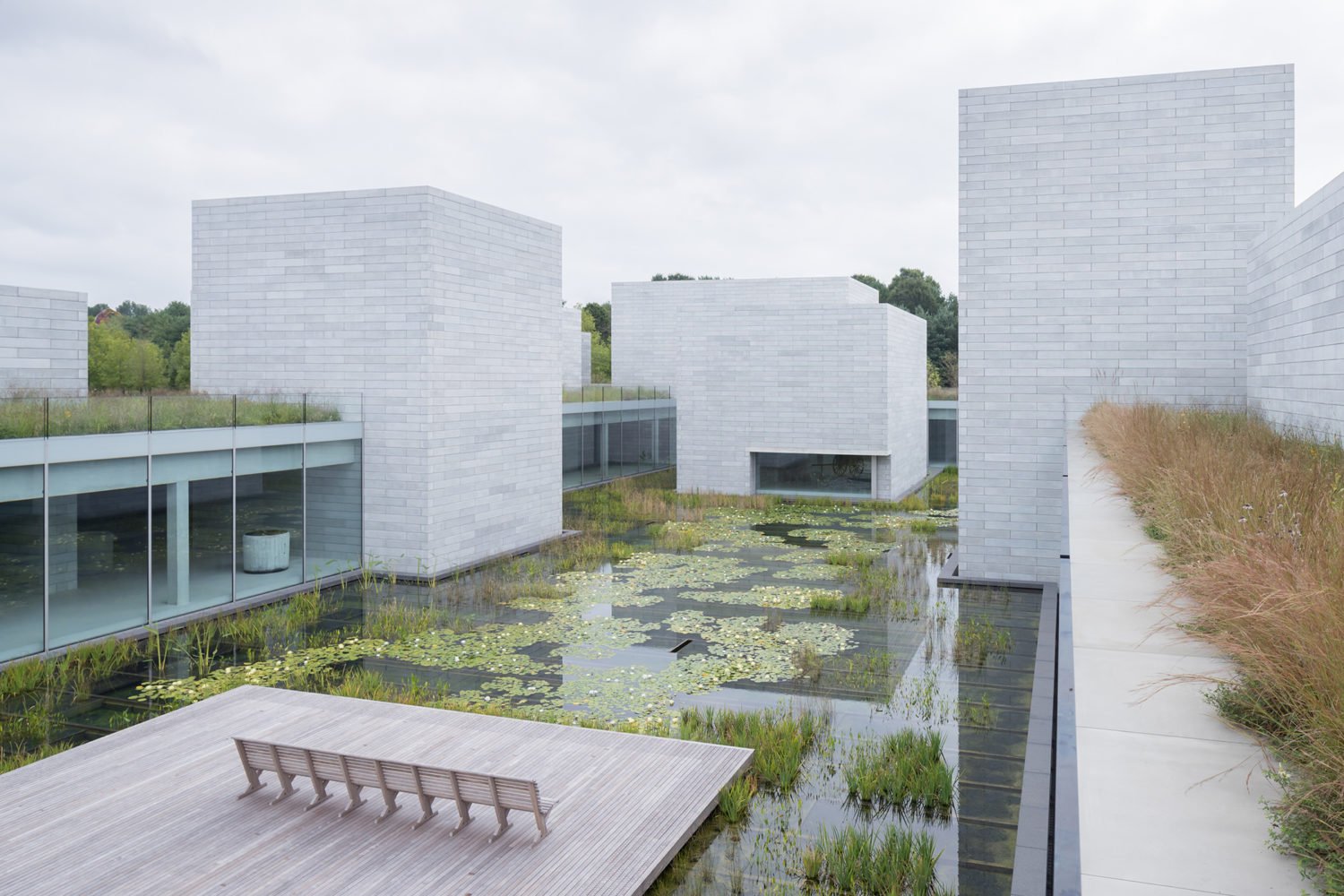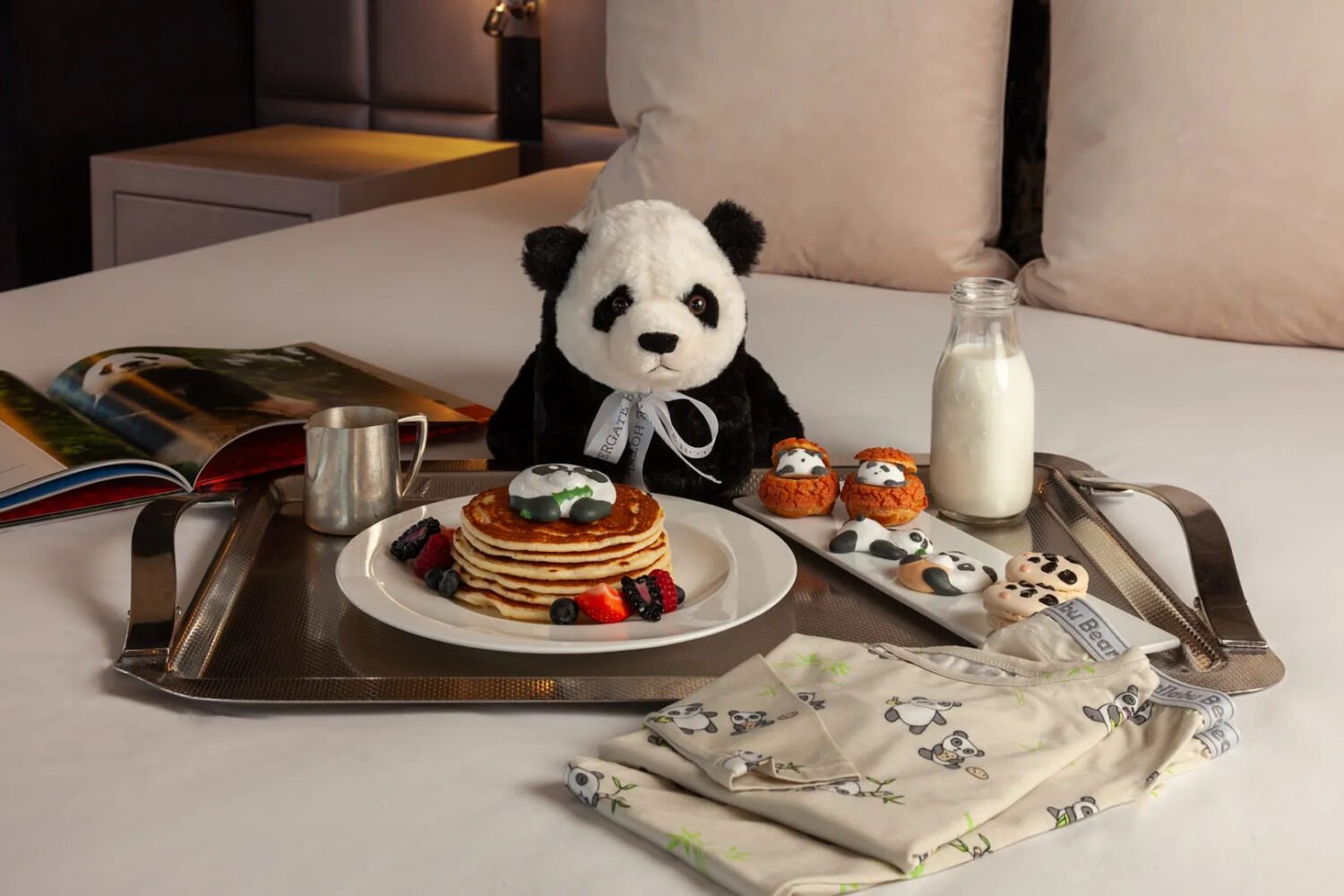Cherry Blossom trees along the Tidal Basin. Photograph courtesy of Flickr user dctim1.
History
Growing cherry trees in Washington was the brainchild of two flowering-cherry aficionados, Eliza Scidmore and Dr. David Fairchild. Scidmore, the first woman to sit on the National Geographic Society’s board of directors, tried unsuccessfully for 20 years, starting in the 1880s, to get the trees imported. Fairchild, a botanist for the Department of Agriculture, paid for 75 trees himself to test their viability. In 1907 he declared the experiment a success.
It wasn’t until 1910, however, that Washington received its first shipment of Japanese flowering cherries. The government of Japan sent 2,000 of them as a gesture of friendship, hoping in part to smooth over ongoing immigration tensions with the US. Much to the chagrin of the Taft administration, inspectors with the Department of Agriculture found the trees full of insects and diseases and recommended they be burned to protect American specimens. This nearly created a diplomatic crisis, and the decision to burn the trees required an okay from the secretaries of state and war–as well as President Taft himself.
In 1912, Tokyo mayor Yuko Ozaki gave the city 3,020 more cherry trees, which the Department of Agriculture accepted. First Lady Helen Taft and Viscountess Chinda, wife of the Japanese ambassador, ceremonially planted the first two trees. They remain standing on the north bank of the Tidal Basin just west Independence and 17th streets.
In 1915, the US reciprocated by sending 40 of our native flowering dogwoods to Japan. Hardly a fair trade. . . .
Washington’s first cherry blossom festival took place in 1935, with the backing of the DC Council and local civic organizations.
In 1965, First Lady Lady Bird Johnson accepted a gift of 3,800 more trees from Japan.
The Trees
About 3,750 cherry trees now line the Tidal Basin, the National Mall, and the Potomac waterfront.
Most of them are Yoshino hybrids ( Prunus x yedoensis). Their origin in Japan is unknown, but they were first documented growing in Tokyo in 1872. Each year, nearly 2,800 Yoshinos produce a cloud of single white blossoms around the Tidal Basin and Washington Monument grounds.
There are also about 480 Kwanzan cherries, whose heavy clusters of bright pink blossoms grace the Tidal Basin, East Potomac Park, and Hains Point.
The other major varieties are Takesimensis, which produce huge bunches of white flowers (190); Akebono, whose flowers emerge pale pink and fade to white toward the end of the blooming period (112); and Weeping Japanese, which produce long, draping strands of single pink blossoms (94).
Interspersed among these are Usuzumi (50), Autumn Flowering (21), Sargent (21), Fugenzo (14), Afterglow (2), Okame (1), and Shirofugen (1).
The average lifespan of the trees is 60 years. With careful cultivation, they can last upward of 100 years. In Japan, there are flowering cherries that are more than 1,000 years old.
A century in, about 100 of the original 1912 trees are still standing. Since the 1960s, horticulturalists with the National Park Service and the National Arboretum have tried to preserve the trees’ genetic characteristics by replacing dying trees with genetic clones (individuals grown from cuttings of the originals).
Most of the cherry tree types are not naturally occurring: they can’t reproduce except through human intervention, either by grafting two plants together or through cutting propagation.
The cherries do yield fruit, but it’s tiny, black, and bitter, with a big pit in the center–for the birds, in our opinion.
According to Margaret Pooler, a research geneticist at the National Arboretum, the cherry trees are surprisingly tolerant of urban stresses. The most difficult things to contend with, researchers have found, are ground compaction and rising salt concentrations in the soil.
The cherry trees’ blooming period starts when 20 percent of the blossoms are open and ends when the petals fall and green leaves appear. It can last as long as 14 days but varies with wind, rain, and temperature conditions.
The peak bloom date is defined as the day on which 70 percent of the Yoshino blossoms are open. The date varies from year to year, sometimes prompting weeks of nail biting and guessing games for the National Park Service and festival organizers.
The peak bloom has come as early as March 15, in 1990, and as late as April 18, in 1958.
Quick Tips
Enjoy the blossoms, but help ensure others can enjoy them too, says National Parks Service spokesperson Carol Johnson. “The cherry trees aren’t hardy enough to withstand people climbing. It can really damage them.”
In the same vein, if you’re tempted to take a souvenir, don’t. Breaking off blossoms and branches is considered vandalism of federal property and can land you a citation or even get you arrested, though a Metropolitan Police spokesperson says officers enforce the law with “an incredible amount of discretion,” mostly issuing warnings and small fines.
Driving to the Mall during the cherry blossom festival is not a great idea. There’s no free parking, and paid parking spots are open only at select times. Free public parking is available beyond the Jefferson Memorial, on Ohio Drive, on 14th Street, and on Constitution Avenue. Or try the Metro instead. Convenient stops include Smithsonian, L’Enfant Plaza, Archives-Navy Memorial-Penn Quarter, Metro Center, and Foggy Bottom-GWU.
Finally, the Park Service requests, help keep the Mall clean. If you’re picnicking, dispose of your trash properly. And clean up after pets!
Fun Facts
Japan has a much longer tradition of celebrating cherry blossoms than we do. For ten days in March and April, people flock to blossom-filled parks for hanami (flower-gazing) picnics and festivals. They’ve been at it since the Heian Period . . . in the eighth century.
In 1937, when the National Park Service picked the site for the new Jefferson Memorial, people feared up to 1,000 of the trees would be lost. Cissy Patterson, editor and later publisher of the Washington Times-Herald, led protests by the White House and the construction site, where as many as 50 people chained themselves to the cherry trees. Though construction went on, the Park Service compensated by planting even more new trees than they had removed.
In 1941, a few nights after the attack on Pearl Harbor, four cherry trees were cut down. The Park Service responded with a public relations campaign, referring to the trees as “Oriental cherries” to dissociate them from their Japanese roots. It seemed to work–the trees stayed safe for the duration of the war.
The city also suspended the cherry blossom festival from 1942 to 1946. When it returned in 1947, a record-breaking 450,000 visitors turned out.
On April 3, 1999, two beavers gnawed down four blooming cherry trees on the Tidal Basin. The fate of the beavers–and the safety of the trees–became a media phenomenon, with round-the-clock coverage by CNN. The beavers were caught live and released in an undisclosed wildlife area, far away from the beloved blossoms.
In 1982, Japanese horticulturalists accepted 800 cuttings from the District’s trees to replace some of their originals, which had been destroyed by flooding in Japan.
For more information and interesting cherry blossom facts, visit the National Park Services website or the National Cherry Blossom Festival website.
See our Cherry Blossom Festival 2012 Guide here.

